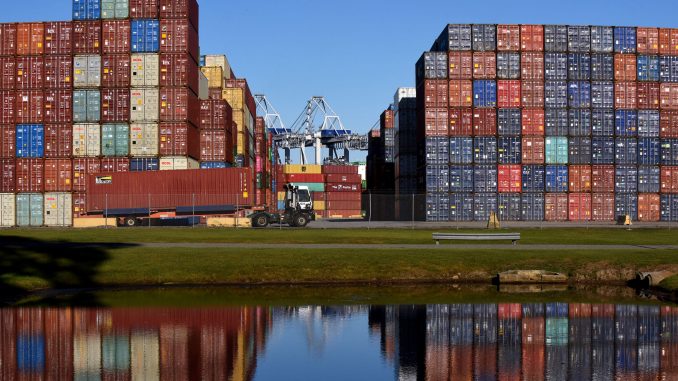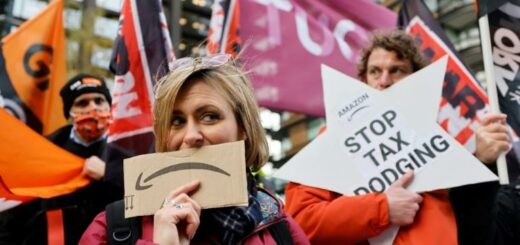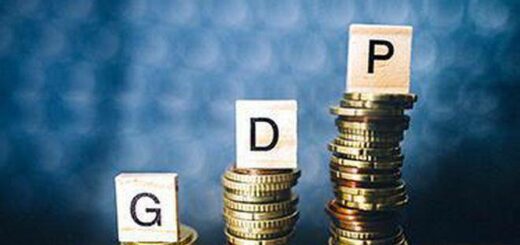Economic development rate eases back to 2% on a sharp lull in buyer spending

- The U.S. economy developed at a 2% annualized pace in the second from last quarter, its slowest increment since the finish of the 2020 downturn.
- Decelerations in customer spending and private speculation helped keep the number lower.
- Week after week jobless cases fell more than anticipated last week to a new pandemic-time low of 281,000, underneath the 289,000 gauge.
Financial development eased back pointedly among July and September as the rise of the COVID-19 delta variation wrecked the recuperation from the Covid downturn, as indicated by information delivered Thursday by the Commerce Department.
U.S. (GDP) developed at an annualized pace of 2% in the second from last quarter, as per the Census Bureau’s first gauge. The economy developed at a 6.7 percent yearly speed in the second quarter of 2021, denoting a sharp stoppage as the delta flood started.
“The increment in second from last quarter GDP mirrored the proceeded with financial effect of the COVID-19 pandemic. A resurgence of COVID-19 cases brought about new limitations and postponements in the resuming of foundations in certain pieces of the country,” the Census Bureau clarified.
US financial development eased back more than anticipated in the second from last quarter to the mildest speed of the pandemic recuperation time frame as growled supply chains and a flood in Covid-19 cases choked spending and speculation.
GDP extended at a 2% annualized rate following a 6.7% speed in the subsequent quarter, the Commerce Department’s fundamental gauge showed Thursday.
While later information has shown the economy shaking off a portion of the delta shock, the Census Bureau information shows the profundities of the harm made by the flood.
Customer spending tumbled off pointedly in the second from last quarter, rising simply 1.6 percent subsequent to taking off 12% higher in the subsequent quarter. The decrease in close to home utilization consumptions was generally because of a precarious drop in spending on cars and automobile parts—which have soar in cost for this present year—and lull in the development of café, bar, and inn spending.
Spending on automobiles and car parts plunged by 26.2 percent in the second from last quarter and hauled products spending somewhere near 9.2 percent all in all. Spending on administrations rose by 7.9 percent, a decay from 11.5 percent in the subsequent quarter.
“Second from last quarter GDP came in lower than anticipated, chiefly because of a more extreme than-anticipated drop in customer spending,” said Robert Frick, corporate market analyst at Navy Federal Credit Union.
The deceleration mirrored a sharp stoppage in close to home utilization, which developed at simply a 1.6% speed after a fast 12% leap in the earlier period. Deficiencies, transportation bottlenecks, rising costs and the delta variation of the Covid burdened the two labor and products spending.
The middle estimate in a Bloomberg review of market analysts required a 2.6% expansion in GDP. U.S. stock file fates held increases, while the dollar fell and Treasury yields rose.
“Generally speaking, this is a major frustration given that the agreement assumption toward the beginning of the quarter in July was for a 7.0% increase and surprisingly our own negative 3.5% estimate ended up being excessively hopeful,” composed Paul Ashworth, boss U.S. financial analyst at Capital Economics. “We anticipate something of a bounce back in the last quarter of this current year — if by some stroke of good luck since engine vehicles will not be such a drag and any adverse consequence from Delta ought to be turned around.”
In a different monetary report, jobless cases added up to 281,000 for the week finished Oct. 23, another pandemic-period low and better than the 289,000 gauge. The absolute denoted a reduction from the earlier week’s 291,000. Proceeding with claims fell by 237,000 to 2.24 million, and those getting benefits under all projects dropped by 448,386 to 2.83 million.
The most recent information highlight how exceptional stock limitations are keeping down the U.S. economy. Understaffed and shy of vital materials, makers are battling to stay aware of interest. Specialist organizations, who face comparative tensions, fared better compared to makers during the quarter in spite of the pickup in diseases.
While store network difficulties are relied upon to wait well into 2022, dying down Covid-19 diseases and raised investment funds should uphold more grounded family spending in the last three months of the year.
“Looking forward, we see a more grounded speed of development in the final quarter on a bounce back in family spending, yet with disadvantage hazard from production network separations and deficiencies that could be an imperative for the financial extension over coming months,” Rubeela Farooqi, boss U.S. financial analyst at High Frequency Economics, said in a note.
Organizations during the flow profit season have noticed the issues with supply chains, however many say clients will follow through on greater expenses. That thusly has helped fuel swelling, which is running near its 30-year high and furthermore is normal by most market analysts and Federal Reserve policymakers to cool one year from now.
Thursday’s information showed that essentially the speed of the swelling rise had made a stride back.
Center individual utilization consumptions, which reject food and energy and are the favored check by which the Fed estimates swelling, rose 4.5%, a deceleration from the second quarter’s 6.1% increment yet at the same time well over the pre-Covid pace. The feature PCE cost list expanded 5.3% in Q3, down from 6.5% in the past period.
Disclaimer: The views, suggestions, and opinions expressed here are the sole responsibility of the experts. No STOCKS MONO journalist was involved in the writing and production of this article.



